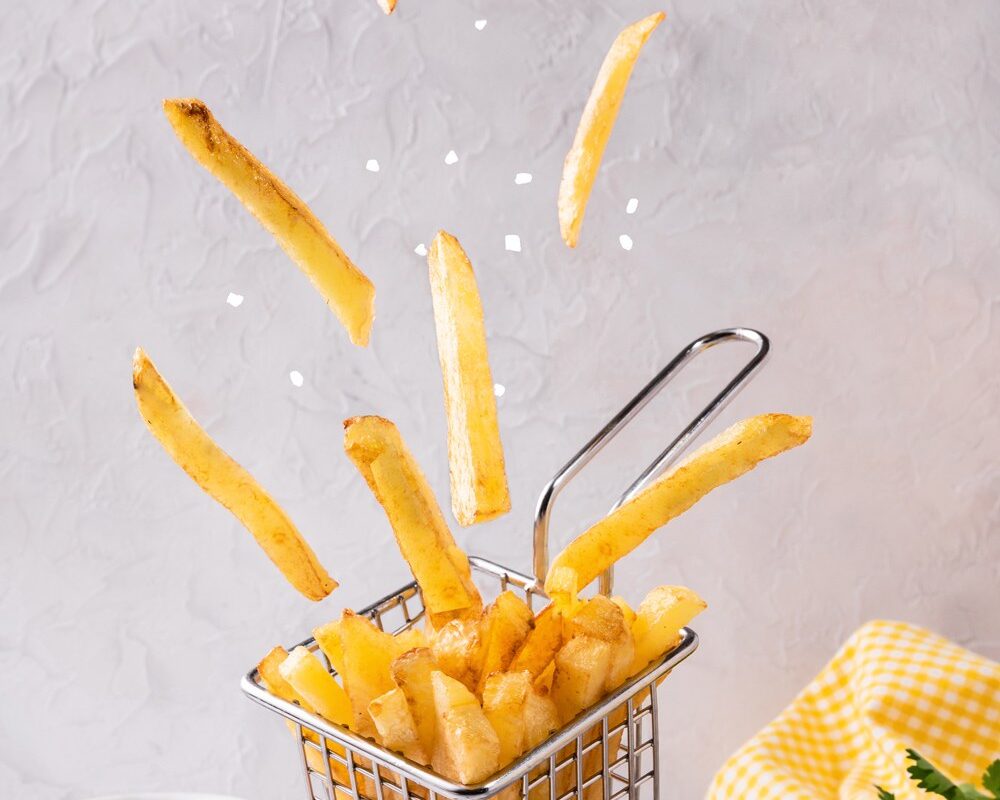Have you ever felt extremely bloated, uncomfortable and puffy after eating a bowl of fries or a packet of chips? You can blame all the excess salt in the meal. “Excess of salt in the system leads to water retention, which could temporarily cause a gain in weight, not to mention the persisting uneasiness. Water retention is the body’s way of retaining water, and salt exacerbates it because it absorbs water while getting stored into our cells,” explains RD Fatima Valikarimwala.
But the negative effects of salt go deeper than that. “Daily, our body requires only 6-8 grams of salt to maintain optimum cellular metabolism. However, higher consumption of refined salt could lead to medical issues such as high blood pressure, cardiovascular disease, kidney malfunctions, and water retention,” says Pranathi Bollapragada, a health coach from Dharana at Hilton Shillim. The kidneys use osmosis to draw excess water out of the blood, and this requires a balance of sodium and potassium to do so. Eating excess salt can wreck this balance, increase sodium levels in the blood stream and reduce the ability of the kidneys to remove water. This leads to a higher blood pressure, which puts a strain on the blood vessels leading to the kidney. The extra pressure also puts a strain on the inside of the arteries, which become stronger and thicker to compensate, leaving the space inside even smaller. This can eventually cause anginas, and even heart attacks in the worst case scenario.
We spoke to experts across the board to get their top tips on reducing salt intake, and how you can do it without having to compromise on taste or convenience.
1. Read ingredient labels
Scanning the ingredient labels for hidden sodium is necessary, because even sweet or bland foods can have hidden salt. “Not just pickles, papad or chaat masala—there is sodium in ice cream as well,” says Valikarimwala. Even different brands can have different salt content, so check the labels of two pasta sauces before settling on one, she says. Check the fine print on the packaging for terms like broth, saline solution or monosodium glutamate.
2. Avoid condiment bottles or sachets
Some of the worst culprits are all kind of sauces, ketchup and salad dressings. You can cut down on a lot of unnecessary sodium content without compromising on the taste by making sauces and dressings at home. “This may be a little more time consuming, and require some additional effort, but it’s worth it. Instead of the zero nutritive tomato ketchup, why not make a roasted red pepper sauce at home?” asks nutritionist Eefa Shrof.
3. Balance the sodium load with smart pairings
You don’t have to sacrifice taste for health. “Anything that’s sold from cold storage has a higher amount of salt. These should be restricted, but they are certainly not forbidden. Turkey ham, sausages and canned tuna, all have a high amount of sodium, but there is no harm in enjoying these, as long as you pair them right,” says Shrof. “The problem is when you pair the already sodium-dense turkey ham with commercial white bread and generously spread readymade barbecue sauce. This significantly increases the sodium load of the meal,” she adds. She also suggests rinsing out canned foods with drinking water to wash off excess salt.
4. Make smart salt replacements
Certain foods can imitate the taste of salt and provide additional nutrients. “We are usually unaware of the real taste of the ingredient and are reluctant to try our food with moderate or no salt. Instead of salt, try spices like black pepper, parsley, cilantro, oregano, thyme or dill,” says chef Prem K Pogakula, from The Imperial, New Delhi.
5. Be wary of meals in a packet
The convenience of ready-to-eat pre-cooked meals comes at a cost. “Packaged foods have extremely high sodium, which acts as preservative,” informs Valikarimwala. Instant foods such as pasta, rice, and cereals, could have twice the amount of salt that is used when the same is cooked at home. Even if the packaged food item is mentioned as free of synthetic preservatives, it will compensate by having significantly higher amounts of salt. Sodium is most concentrated in processed and packaged foods such as chips and frozen foods.
6. Restrict the use of refined salt
Refined salt gets stripped of other essential minerals during clarification and refining process. “Selenium is one such mineral that remains absent in refined salt. Rock salt is the preferred, more holistic alternative to refined salt as it contains selenium and other trace minerals. Selenium, in turn, resolves to balance blood pressure, thus preventing certain lifestyle diseases,” states Bollapragada.
7. Reach for unsalted snacks
While you might use salt and seasonings in your lunch and dinner, choosing snacks like fresh fruits, dips, unsalted popcorn and nuts can help reduce the sodium load through the day.
8. Balance out salt levels with potassium-rich foods
Incorporate foods with potassium like potatoes, sweet potatoes, bananas and oranges to your diet. This helps to balance out the body, especially after a sodium-heavy meal the night before. The balance may also help to reduce blood pressure as well.





